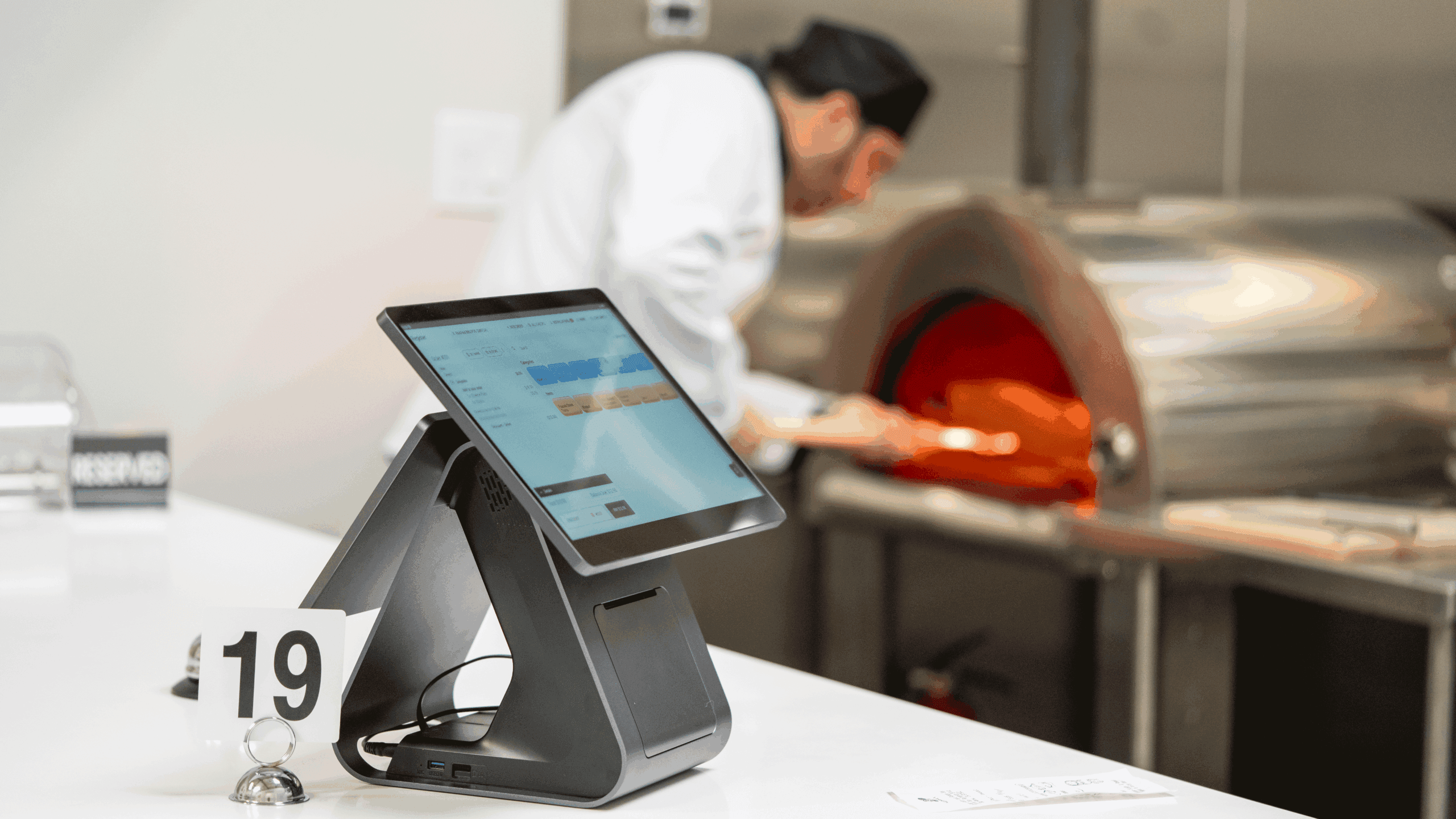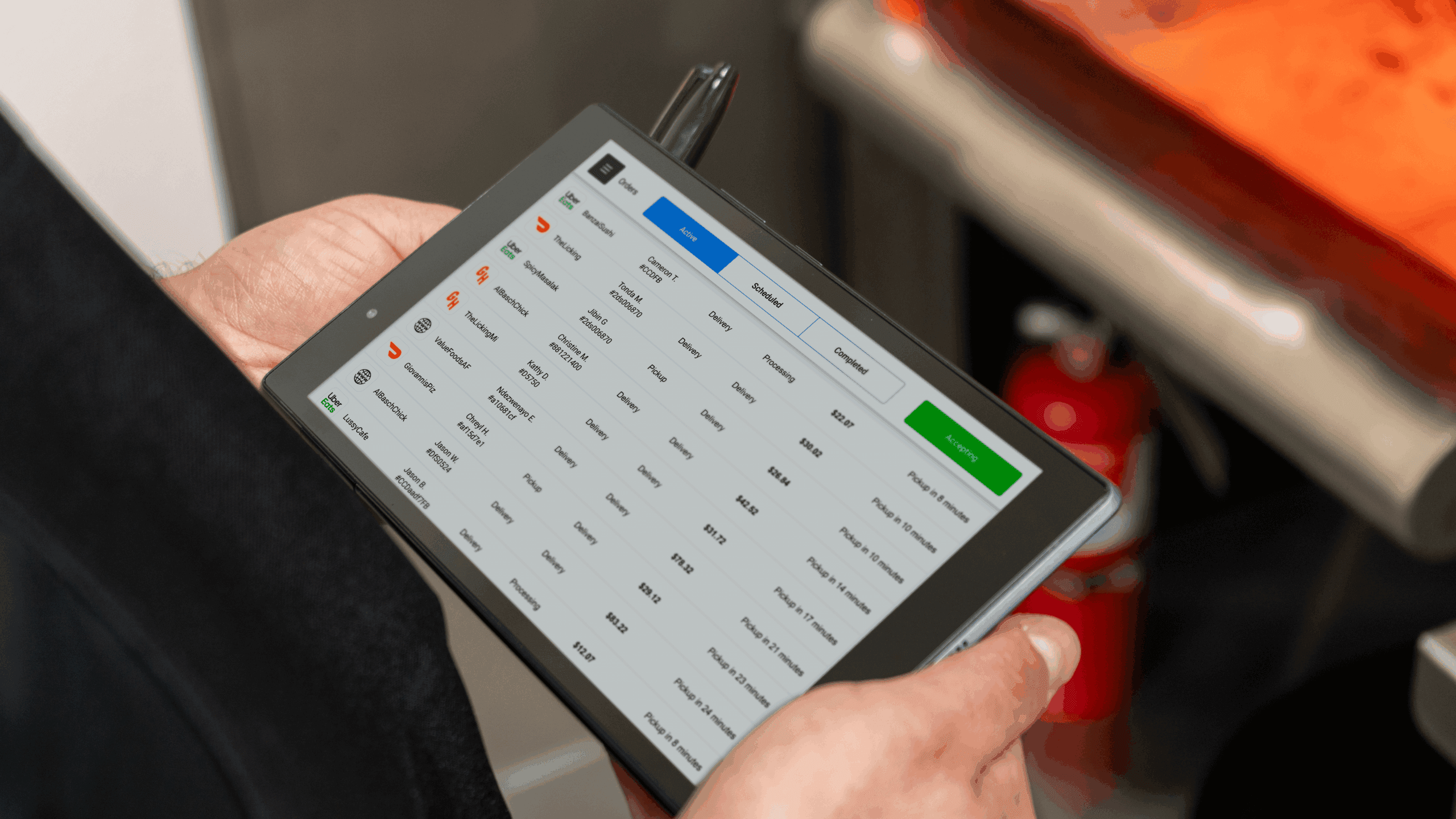- Finding and Retaining Quality Staff
- Managing Food Costs and Pricing Menu Items
- Ensuring Food Safety and Sanitation
- Maintaining a Consistent Customer Experience
- Managing and Optimizing Online Presence
- Adapting to Changing Market Trends and Customer Preferences
- Ensuring Compliance With Local Regulations and Laws
- Navigating the Challenges of Offering Delivery Services
- Cultivating Customer Loyalty and Positive Reviews
- Overcome Challenges with Orders.co
Running a restaurant can be a dream come true for those who have a passion for cooking and providing excellent customer service.
However, owning a restaurant also comes with a multitude of challenges that can test even the most seasoned professionals. From managing staff to ensuring customer satisfaction, there are numerous challenges that a restaurant owner must overcome on a daily basis.
These challenges can be especially difficult for small and independent restaurants, which may not have the resources of larger chain restaurants. However, with careful planning and a focus on continuous improvement, it is possible to overcome these challenges and achieve success in the restaurant industry.
In this article, we will delve into nine common challenges restaurants face and offer solutions on how to tackle them. Whether you are a seasoned restaurateur or just starting out in the industry, these strategies will help you navigate through the bumps in the road and keep your business running smoothly.
Let’s get started!
1. Finding and Retaining Quality Staff
Finding and retaining quality staff is one of the major restaurant challenges. It’s essential to have a team of skilled and dedicated employees in order to run a successful business, but attracting and retaining top talent can be difficult.
This is especially true when there is a labor shortage, which is becoming increasingly common in the restaurant industry.
One solution is to offer competitive pay and benefits. By offering higher salaries and perks such as healthcare or 401(k) plans, restaurants can attract top candidates who are seeking stability and security in their job.
In addition to competitive pay, investing in employee training and development can help to retain staff and ensure that they are equipped with the skills and knowledge they need to succeed.
Creating a positive work culture is also crucial. By fostering a supportive and collaborative environment, restaurants can create a positive and enjoyable place to work, which can lead to lower turnover rates and a more engaged and motivated workforce.
Finally, restaurants should also prioritize employee recognition and reward systems. Recognizing employees for their hard work can go a long way in terms of creating job satisfaction and loyalty.
Rewards such as gift cards or bonuses can be used to further incentivize staff and show them that they are valued members of the team.
So, by investing in quality staff, restaurants can create a successful business that is built on strong foundations. With the right strategies and approach, finding and retaining quality staff doesn’t have to be an insurmountable challenge in your restaurant management!
2. Managing Food Costs and Pricing Menu Items
Managing food costs and determining the prices for menu items is one of the greatest challenges restaurants face.
Although cutting costs can be a tempting solution, it is not always in the restaurant’s best interest, as compromising on quality will ultimately hurt business in the long run.
The trick is to come up with creative solutions that make room for more profit without diminishing product quality or service standards.
One way to expand your restaurant sales and control your food costs is to focus on menu engineering, which involves analyzing the popularity and profitability of each menu item and making strategic adjustments.
For example, a restaurant might choose to raise the price of a particularly popular dish that has a low food cost or to lower the price of a dish that is not selling well in order to increase demand.
Another option is to negotiate better deals with suppliers or to source ingredients locally in order to reduce costs. This can also help to support the local economy and create a stronger connection with customers.
In addition, restaurants should also consider ways of reducing food waste in order to save money. One way of doing this is by investing in portion control tools such as measuring cups and digital scales, which can help ensure that ingredients are used efficiently and that nothing goes to waste.
By taking the time to analyze their menu and find ways to manage cash flow, restaurants can create a profitable business that is sustainable in the long run.
3. Ensuring Food Safety and Sanitation
Ensuring food safety and sanitation is one of the most important – yet difficult – challenges that restaurants have to tackle.
Accidents can occur during storage, preparation, transportation, and service of food, potentially leading not just to customer complaints but also to illnesses or even costly lawsuits.
To minimize these risks, owners should make sure that every stage of their food handling process meets regulatory requirements and industry best practices.
This means investing in proper facilities for storing food items under the appropriate temperature, cleaning it with sanitizing solutions (which must also be properly stored when not in use), and training staff on the basics of hygiene and kitchen safety so they can handle food safely from start to finish.
It’s essential that restaurants have an effective plan to monitor processes as well as a system in place should there be any potential contamination or hazard violations.
By putting these measures into practice, restaurant owners can ensure they are doing their part in guaranteeing the health and safety of their restaurant’s patrons.
4. Maintaining a Consistent Customer Experience
For restaurants, providing a consistent customer experience is an ongoing challenge. After all, it’s much harder to manage the customer experience in a restaurant setting where customers come and go compared to an online or in-store experience that typically happens in the same location or platform.
Keeping the same level of quality, consistency, and trust with each customer interaction is the key to success – but how can this be achieved?
First and foremost, ensure your staff is well-informed and regularly trained on all your processes. This includes everything from serving etiquette to food safety standards and any other policies you may have put in place to maintain your customers’ satisfaction.
Additionally, paying attention to little details, such as following up after orders to check for any feedback or suggestions, can show your customers that you care about their experience and want them to feel valued.
Finally, be sure to track ongoing customer service trends so that you are able to provide customers with consistently evolving offerings that meet their needs over time.
With these strategies in place, restaurants will be well on their way to ensuring their customers receive a consistently positive dining experience.
Your Inbox, Your Rules!
Tailor your newsletter with the topics you're most interested in.
5. Managing and Optimizing Online Presence
One of the biggest restaurant marketing challenges is managing and optimizing a restaurant’s online presence.
In this age of technology, it is essential that restaurant brands create and maintain an effective online marketing strategy that is well-rounded and dynamic.
It’s important to know how to stand out among competitors in order to pull potential customers in, but also having an understanding of how social media works can be a make or break when it comes to staying on top of restaurant promotion.
To give consumption a boost, restaurants should keep their online content fresh, utilize search engine optimization (SEO) techniques such as strategically placed keywords, and take advantage of analytics tools to track website performance.
Establishing an effective blog can increase customer reach, while recurring customers are a great opportunity for lead generation through email newsletters.
In addition, using customer feedback surveys will provide key insights into customer expectations and ensure customer satisfaction is at the forefront of all decisions made.
By balancing cost with visibility and creativity with consistency, restaurants can tackle the challenge of managing and optimizing their online presence in an efficient way.


Receive Actionable Tips Immediately!
6. Adapting to Changing Market Trends and Customer Preferences
As the restaurant industry continues to evolve, it is important for businesses to stay up-to-date on market trends and customer preferences in order to stay competitive and relevant.
This can mean offering alternative menu options such as vegetarian or vegan dishes, incorporating technology into the dining experience, providing online ordering or embracing new cooking techniques or ingredients.
It is also important to regularly gather feedback and insights from customers through surveys or focus groups in order to better understand their needs and preferences.
By staying attuned to changes in the market and adapting to meet the changing needs of customers, restaurants can remain relevant and successful in an ever-evolving industry.
However, it is also important for restaurants to maintain their unique identity and not simply follow trends blindly, as this can lead to a loss of authenticity and customer loyalty.
Finding a balance between staying current and staying true to a restaurant’s brand and identity is key to adapting to changing market trends and customer preferences.
7. Ensuring Compliance With Local Regulations and Laws
Restaurants have to ensure compliance with local regulations and laws in order to keep their businesses running smoothly. This means understanding the specifics of relevant zoning ordinances, health codes, licensing requirements, and tax rules.
In order to do this, it is important for restaurant owners to stay informed about changes in local regulations, as well as any updates to state and federal laws that may apply to their restaurant business.
Additionally, restaurants should also have a clear understanding of labor laws, such as minimum wage requirements and overtime rules, so they can ensure compliance with those as well.
Having the right insurance coverage is essential for businesses operating within the hospitality industry, as this can help cover any potential liabilities or losses due to accidents or negligence.
Finally, restaurants should also invest in tools and systems that enable them to track compliance requirements accurately and efficiently. This includes inventory management systems, point-of-sale systems, payroll software services, and more.
By staying up-to-date on local regulations and laws and investing in the right tools and systems, restaurants can ensure they remain compliant and protect their business from any potential legal issues.
8. Navigating the Challenges of Offering Delivery Services
COVID-19 has prompted massive changes in how restaurants operate. Some restaurants were forced to pivot quickly to off-premise channels to deal with local business restrictions, changing menus toward a delivery focus.
In fact, offering delivery services is a great way for restaurants to expand their reach and increase sales – but it can also present some unique restaurant challenges.
For starters, restaurants must be sure to consider their capacity and staffing needs before taking on delivery orders. They must also have a reliable system in place for tracking orders, managing customers’ personal information, and handling payments securely.
In addition, restaurants may need to invest in special equipment such as insulated bags or boxes in order to ensure that food is kept at the right temperature when it arrives to the customer.
They should also consider implementing a third-party delivery service, as this can help reduce costs and streamline the ordering process. There are a number of services available, but restaurants should research each one to ensure it meets their needs.
And the most important component of a successful delivery service will likely be the quality and timeliness of the food. Restaurants should take every step to ensure that orders are prepared correctly and arrive on time in order to maintain customer satisfaction.
By taking these factors into consideration, restaurants can navigate the challenges of offering delivery services and make the most out of this valuable opportunity.
9. Cultivating Customer Loyalty and Positive Reviews
In an increasingly crowded market, cultivating customer loyalty and maintaining positive reviews is essential for any restaurant’s success.
Establishing strong relationships with customers can help to build loyalty, encourage repeat business, and improve customer satisfaction. This can be achieved by providing excellent service – from the friendly staff to prompt order times – and offering loyalty programs or rewards for customers who come back time and again.
Offering discounts or special promotions can also help to attract new customers, while personalized thank-you notes or follow-up emails can show existing customers that they are valued.
Restaurants should always be monitoring and responding to customer reviews on social media and other review sites, as this is one of the best ways to keep customers happy and attract new business.
By taking the time to foster customer loyalty and cultivate positive reviews, restaurants can ensure that their business is successful in the long run.
Overcome Challenges with Orders.co
Managing the day-to-day operations of a restaurant can be a daunting challenge, but Orders can help make it easier.
Orders.co is an all-in-one platform that provides restaurants with everything they need to operate efficiently and effectively, from automated order and payment processing to data analysis and customer insights.
The platform provides restaurants with the tools to manage orders, track inventory, and optimize their menu without having to invest in additional hardware or software. It also allows them to quickly respond to customer feedback, helping ensure satisfaction levels remain high.
So, whether you’re looking to streamline operations, improve customer service, or increase efficiency and profits, Orders can provide the tools to help many restaurants overcome the challenges of running a successful business. With Orders by your side, you’ll be well-equipped to meet any challenge that comes your way!
Call Orders.co today and take the first step towards success!





